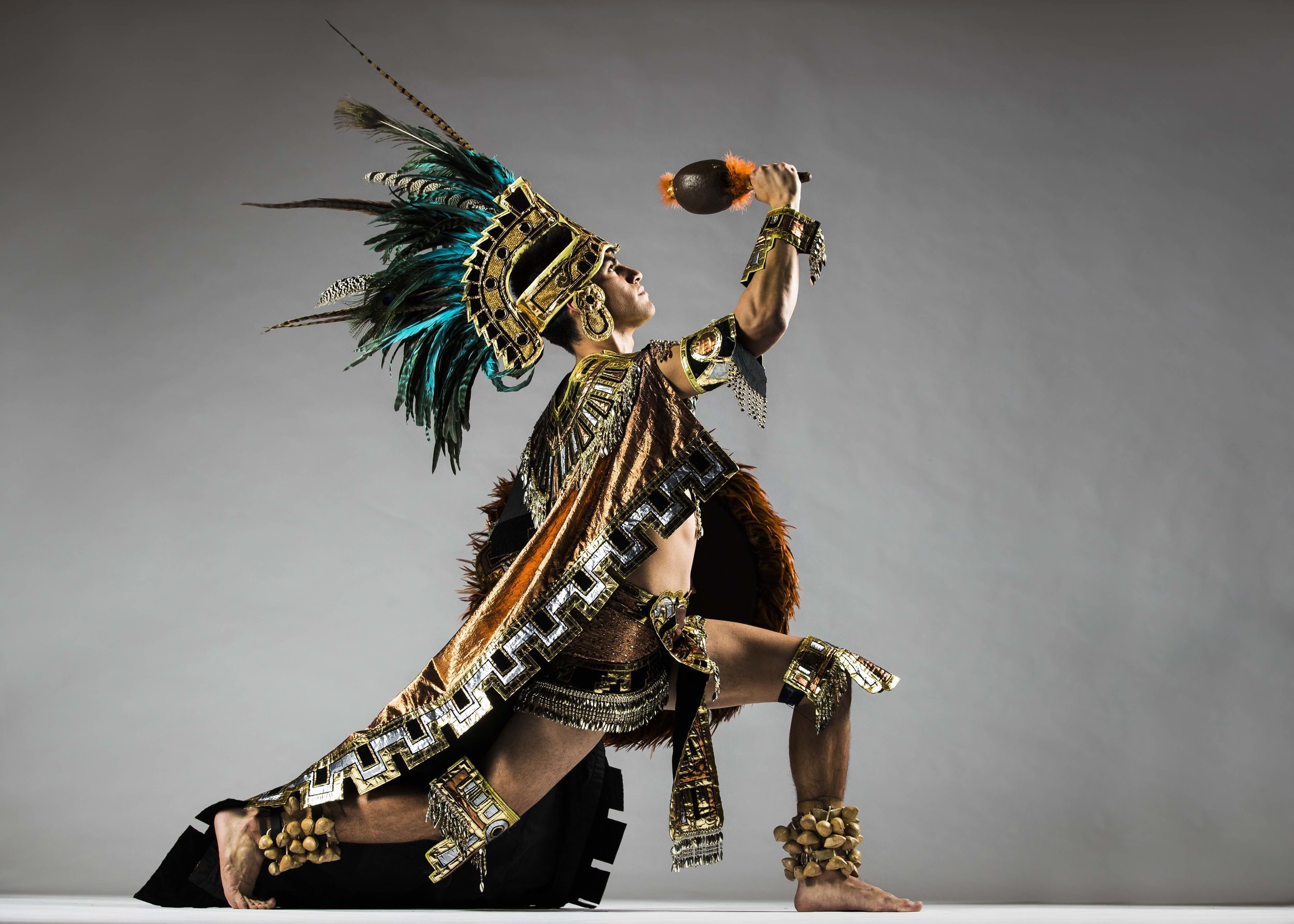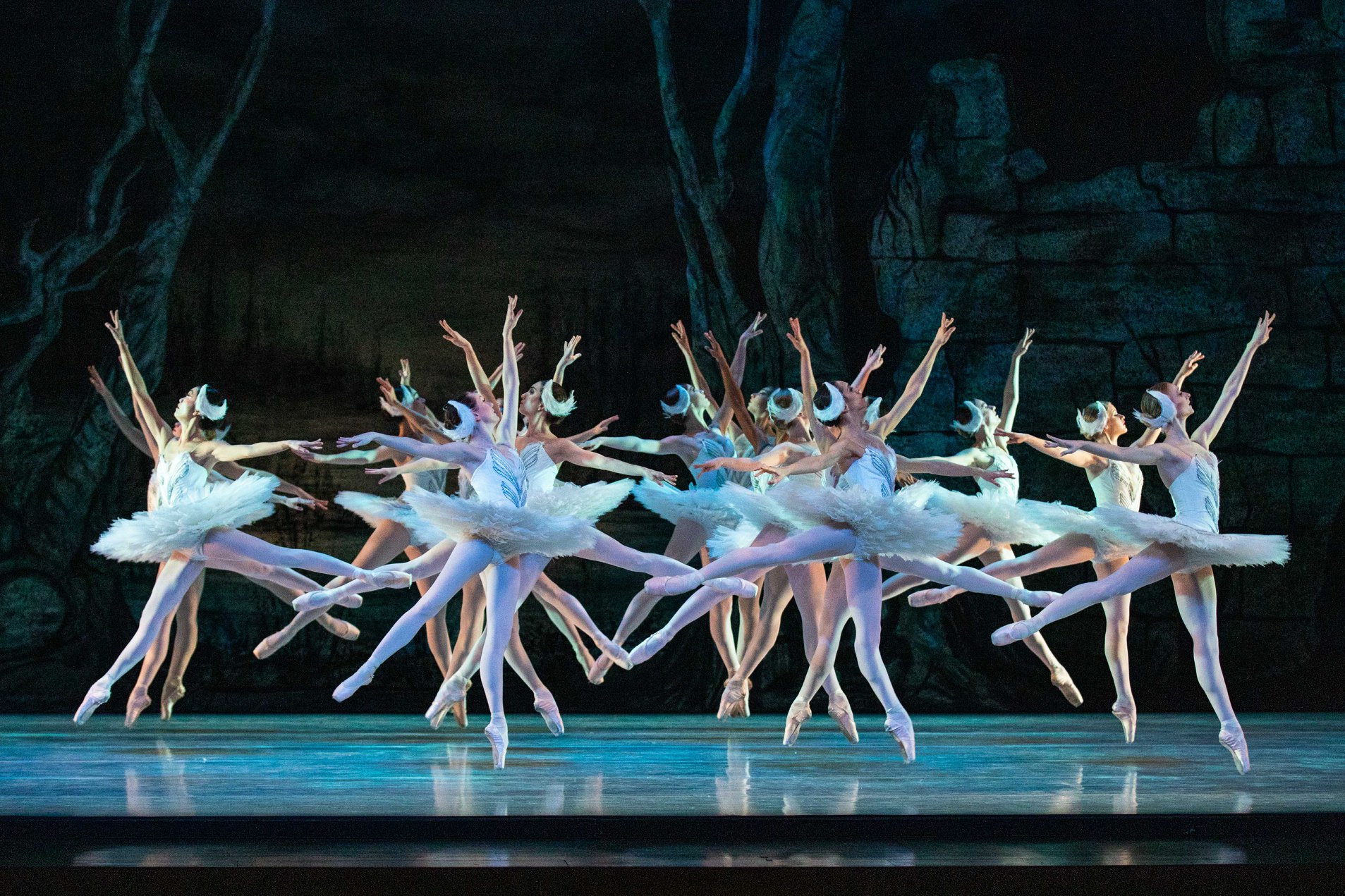Presented by the Park City Institute, Parsons Dance returned to Utah to perform an energetic and exhausting program at the Eccles Center. Founded in 1985 by David Parsons and lighting designer Howell Binkley, the nine-dancer company maintains a large repertory and touring schedule. This program included four dances choreographed by Parsons between 2003 and 2018, an earlier work of his titled Caught (1982), and a new Trey McIntyre piece commissioned for the company this season.
Following one frazzled volunteer checking in a will-call line that extended out the door, a shortage of programs, and a lengthy speech from Park City Institute executive director Teri Orr thanking a plentiful circle of generous donors, the evening began with “Round My World.” The curtain rose on six dancers in blue, under a bright overhead light. Choreographed by Parsons in 2012, “Round My World” was a lyrical/contemporary-style piece that featured, as its title suggests, a lot of circles. The dancers swirled around as a group or in pairs, linking their arms and positioning their bodies with and around each other to form various circular images. The costuming was starkly gendered, an approach also reflected in the choreography and pairing of dancers, with the men in flowy, light blue pants, sans shirts, and the women in knee-length, light blue dresses.
Parsons’ “Hand Dance,” from 2003, employed a back light to illuminate five sets of hands. Glowing orange, the hands skittered about in time with a racing piano score; at their best, using the freedom of untethered, abstract shapes to create wonderful, Fantasia-esque magic, and at their worst, elbowing the audience repeatedly in the gut with some groan-worthy gimmicks. When “Hand Dance” began, I wondered if (and how) it might develop into anything further - unsurprisingly it didn’t, echoing the single-note approach of the first piece.
The new McIntyre commission, “Eight Women,” came next. It utilized a trope that now seems to have become a persistent and pervasive standard: a stage doused in warm reds and oranges, choreography that liberally borrows from social dance forms, and a musical assortment of the swelling, oxygen-gobbling voices of the iconic greats of jazz, soul, Latin, Motown, etc. I’ve seen a version of this same piece at least a half dozen times over the last few years, from both touring contemporary ballet and modern companies: the dancers swirl around, ambiguously fiery, in this case to Aretha Franklin’s “Spanish Harlem,” but the content falls short when held up against the emotive legacy of the familiar musical selections.
Following intermission were three more pieces, the first of which, “Microburst,” was perhaps my least favorite. Four dancers were costumed in black jazz pants with one leg covered in fringe. The women also wore asymmetrical, ab-baring tops that were, frankly, terrible, resembling a purchase from a discounted dancewear catalog, such as for a children’s jazz competition number, rather than a choice made by an internationally renowned company with more than three decades of experience and resources to draw from.
The dance itself was a conceptual tangle of familiar artistic and cultural appropriations. The dancers performed popping and ticking movements in a swaggering, dance battle set-up to an original score by tabla player Avirodh Sharma. Overall, the piece was not sharp, quick, or together enough to be convincing, or to stand up to the music’s complex rhythms as the dancers traded places back and forth. A trend, as identified in the first half of the program, to centralize Utah native Zoey Anderson was further solidified. Clearly at home in the (literal) spotlight, Anderson tossed her ponytail and milked the vibe of “Microburst” for all it was worth, her aggressive energy and attack edging out any chance of focusing on the other dancers.
“Caught,” the heritage solo that Parsons dancers have been performing for the last 37 years, was predictably the standout of the program, again featuring Anderson. The piece began with her moving through a series of spotlights on the floor. Then darkness descended and wild sequences of traveling jumps were illuminated at their moment of full height by a flashing strobe. The effect was such that Anderson appeared to float, impossibly, around the stage. This simple, but complete, idea and the exacting execution of its technical trickery made the conceit work perfectly. Anderson performed “Caught” with impressive force to shock and awe, as well as elicit a mid-program standing ovation from, the Park City audience.
While “Caught” may have provided an exhilarating natural ending to the evening, the final piece was an example of another overused trope - the exhausting yet aimless, jazzy ensemble send-off, airlifted out of its natural context as a background diversion or transition in a busy musical theatre number. Anderson once again wiggled and jumped from spotlight to spotlight by herself while the other dancers wiggled and jumped around her. Although her energy and presence were undeniably striking, her competition-style “cheesing” was ultimately distracting and the spotlight which pushed her to the forefront throughout the entire program forced the other (capable and lovely) dancers into the uncomfortable role of accessory, belying the mantle of Parsons Dance as an “ensemble” project.
By far, the most exhilarating aspect of the program was the sheer energy possessed by the company. From start to finish, they were exhausting to watch, as each piece they performed was packed with huge movement, constant jumping, and neatly executed but dizzying turns. All that expended energy never quite made up for what it seemed was missing from the program, but it was nonetheless incredible to fathom how the dancers were able to sustain that dynamic.
Emily Snow is a Denver native who now calls Salt Lake City home. She has most recently been seen performing with Municipal Ballet Co. and with Durian Durian, an art band that combines electronic music and postmodern dance.






